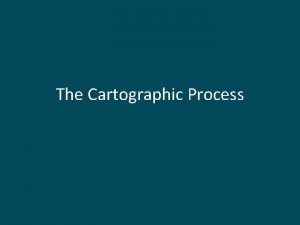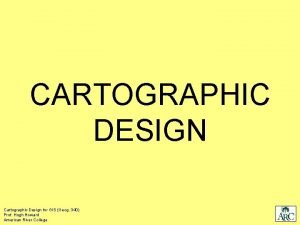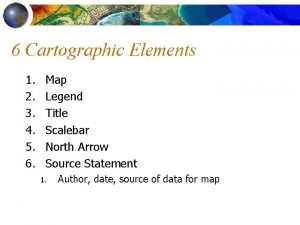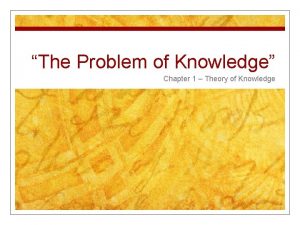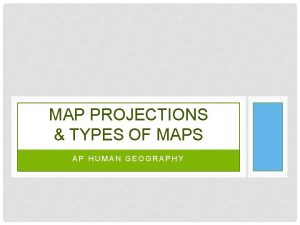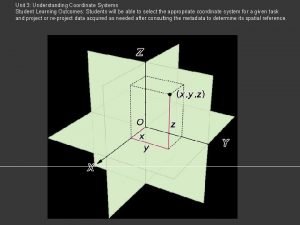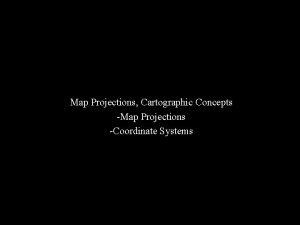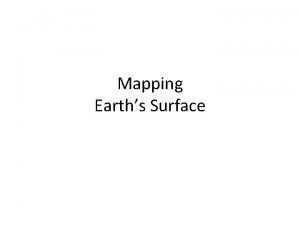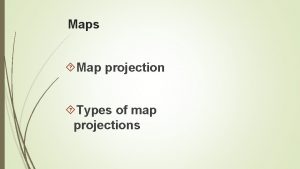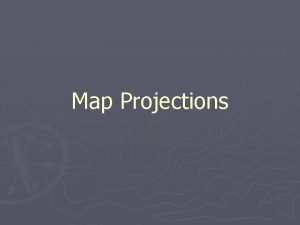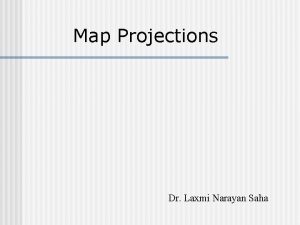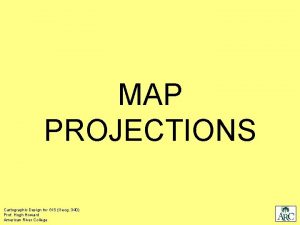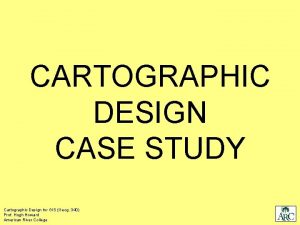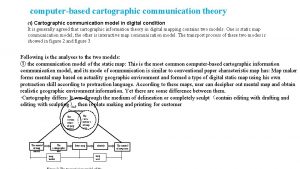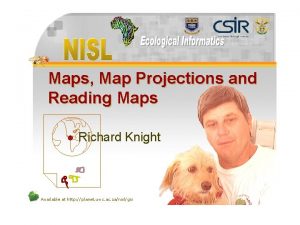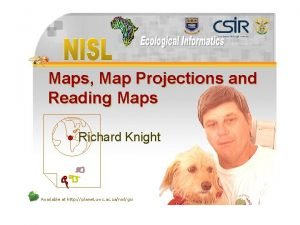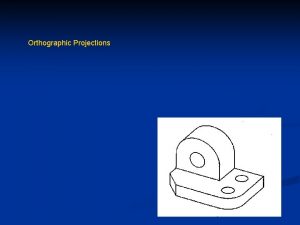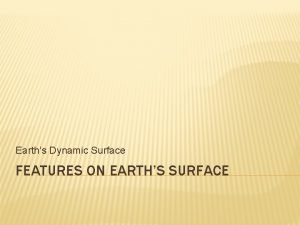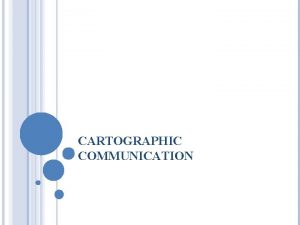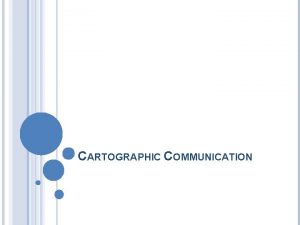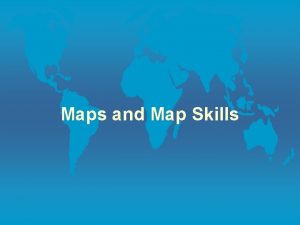Earths surface and maps Maps Cartographic projections Map





















- Slides: 21

Earth´s surface and maps Maps Cartographic projections Map content Mgr. Matúš Dobeš, 2006

Maps

Maps n n Cartography = science studying possibilities how to display globular shape of the Earth to the flat drawing area Map = cartographic work and together with the globe represents the world around us


Historical maps

Maps n A map provides graphic, transparent, distorted miniature of the Earth´s surface by using captions (marks), symbols and colours. Maps are used by geographers, geologists, foresters, constructers, tourists, navigators, fliers, etc.

Various maps

Maps n n n Earth´s surface is very complex (complicated) => it´s needed to simplify it => generalization. Air and satellite survey are the most basic ways how to obtain pictures of the Earth. Basic field data important for cartographers = Location Altitude Dimensions

Map generalization

Maps n n n Map types according to theme: map plans topographic maps geographic maps Every map includes also geographic grid (geographic coordinates) created by latitude (parallels) and longitude (meridians)


Map scale n the relation between the map distance and reality => 1 : m 1 : 50, 000 means that 1 cm on the map represents 50, 000 cm in reality, in other words 500 m or 0, 5 km

Map scale n n Map types according to map scale large-scale maps (great focus representing small area with many details) n n medium-scale maps n n e. g. 1 : 50 000 (tourist map) e. g. 1 : 500 000 (autoroute map) small-scale maps (small focus representing large area with few details), n e. g. 1 : 10 000 (world map)

Cartographic projections

Cartographic projections n n = methods of displaying the Earth´s surface = projections i. e. transferring 3 D (world) to 2 D (map) => distortions

Cartographic projections n n n conform projections = angles are the same => appropriate for navigation, flights, etc. equivalent projections = areas are the same equidistant projections = distances are the same => the larger the area, the greater the distortion

Map content

Map content n n n = all the objects shown on the map by signs and symbols => physical and political maps Topographic content Vertical segmentation = altitude (hypsometry) => contours – lines joining points with the same altitude => positive altitude (above sea level) and negative altitude (below sea level)

Map content n Horizontal segmentation = planimetry = all points, lines and symbols representing vegetation, settlements, etc. using different colours

Map content n n Thematic content = points, lines and areas using special symbols and colours for special purposes => thematic maps, e. g. ecological, climatic, urban, population, etc. legend (description) – inseparable part of all maps

Thank You for Your attention
 Cartographic process
Cartographic process Qualitative typographic visual variables
Qualitative typographic visual variables Cartographic elements
Cartographic elements Cartographic paradox
Cartographic paradox Isoline map ap human geography
Isoline map ap human geography Usgs map projections poster
Usgs map projections poster Earths layers foldable
Earths layers foldable Earths roation
Earths roation Whats a natural satellite
Whats a natural satellite Forest desert tundra grassland
Forest desert tundra grassland Periodic table of elements families
Periodic table of elements families Plasticity in earth's layers
Plasticity in earth's layers Whats earths moon called
Whats earths moon called Whats the thickest layer of the earth
Whats the thickest layer of the earth Earths early atmosphere contained
Earths early atmosphere contained Layers of earth foldable
Layers of earth foldable Earths major crustal plates
Earths major crustal plates Earths orbit seasons
Earths orbit seasons Brown earth soil ireland
Brown earth soil ireland Study of the earth's physical features
Study of the earth's physical features Earths honey
Earths honey What is luna moon
What is luna moon
